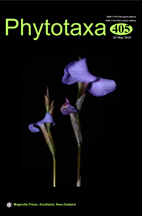Abstract
Based on morphological and molecular phylogenetic studies, Semiaquilegia danxiashanensis, a new species from Danxia Shan in northern Guangdong, southern China, is described and illustrated. This species is easily distinguishable from each of other three known species in the genus by characters of the flowers and fruits. In addition, molecular phylogenetic analyses of both the nuclear ITS and the plastid trnL-F region strongly supported S. danxiashanensis as a separate species from other species of Semiaquilegia. We provide a detailed morphological and habitat description, distribution, as well as colour photographs and illustrations of the new species.

